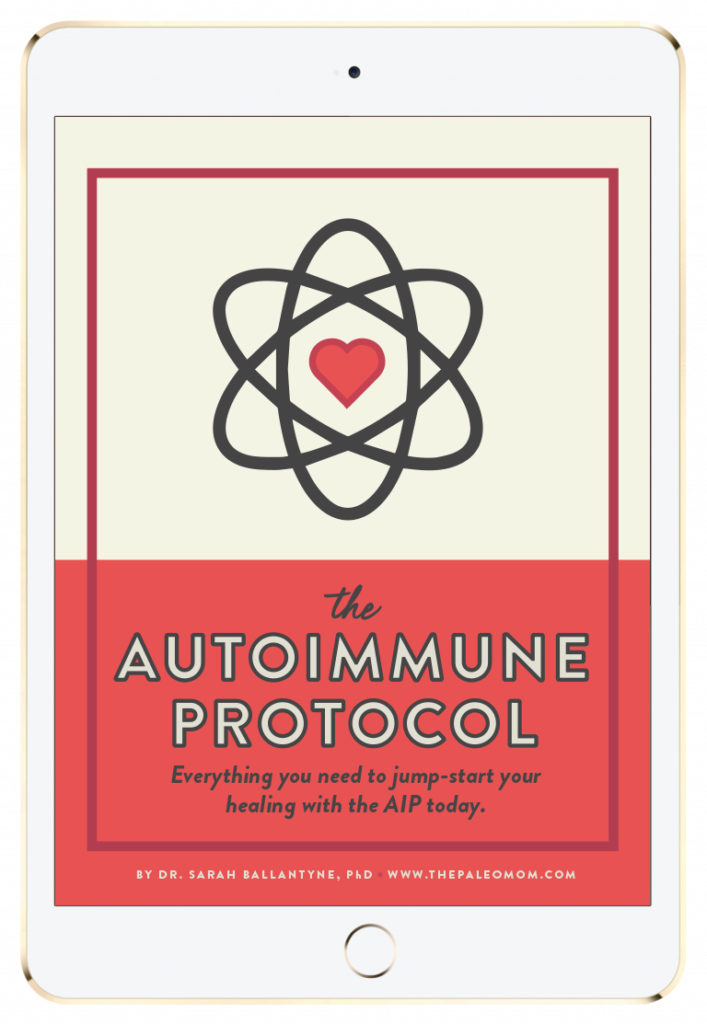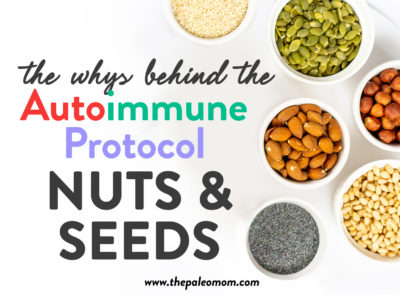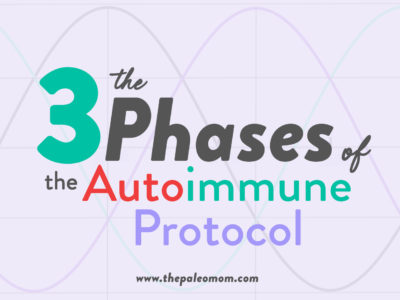Despite mainstream nutrition’s continued promotion of grain-based foods as part of a healthy diet, the evidence against wheat continues to grow (and grow, and grow!). And, it’s becoming increasingly clear that celiacs aren’t the only ones who need to be cautious about eating this ubiquitous grain!
 One of the latest strikes against wheat is its impact on the innate immune system. Several studies have found that wheat amylase trypsin inhibitors, or ATIs (proteins that help protect plants from getting eaten by pests, and which are entirely separate from gluten!) have the ability to stimulate an innate immune response by activating certain myeloid immune cells (including dendritic cells, macrophages, and monocytes). (As a reminder, the innate immune system is the body’s nonspecific first line of defense against foreign invaders, in contrast to the adaptive immune system, which is more complex and involves immunological memory of specific antigens. The innate immune system is our first response to pathogens and is responsible for generalized inflammation whereas adaptive immunity takes longer to activate but attacks antigens with high specificity thanks to the coordinated actions of T cells and B cells.)
One of the latest strikes against wheat is its impact on the innate immune system. Several studies have found that wheat amylase trypsin inhibitors, or ATIs (proteins that help protect plants from getting eaten by pests, and which are entirely separate from gluten!) have the ability to stimulate an innate immune response by activating certain myeloid immune cells (including dendritic cells, macrophages, and monocytes). (As a reminder, the innate immune system is the body’s nonspecific first line of defense against foreign invaders, in contrast to the adaptive immune system, which is more complex and involves immunological memory of specific antigens. The innate immune system is our first response to pathogens and is responsible for generalized inflammation whereas adaptive immunity takes longer to activate but attacks antigens with high specificity thanks to the coordinated actions of T cells and B cells.)
One study found that wheat amylase trypsin inhibitors (which make up as much as 4% of the total protein in wheat!) were able to bind to and activate the CD14-MD2 toll-like receptor 4 (TLR4) complex on innate immune cells. TLR4 is a protein that’s highly involved in inflammatory cytokine production, and its stimulation causes the innate immune system to kick into gear (explaining the link between wheat ATIs and immune activation). In contrast to gluten-containing grains, gluten-free grains had no (or only trivial) levels of ATI bioactivity. The researchers noted that, along with the role of ATIs as co-stimulatory molecules in celiac disease, ATIs also seem to promote other immune-mediated diseases, both within the GI tract and beyond—making them likely culprits in the pathology of non-celiac gluten sensitivity!
The most recent study on wheat ATIs, published in Gastroenterology in April 2017, compared the effects of amylase trypsin inhibitors from 38 different foods that were either gluten-containing or gluten free, including both unprocessed foods (wheat, barley, rye, rice, lentils, amaranth, soy, etc.) and processed items (like pizza, bread, biscuits, and pasta). The researchers extracted the ATIs from each food, determined their biological activity in both mouse and human cell lines, and then studied what happened when those ATIs were fed to mice eating gluten-free diets, mice eating ATI-free diets, or mice with induced colitis.
Th e findings? For starters, gluten-containing grains had ATI levels that were as much as 100-fold higher than gluten-free foods! And, the researchers found that processing and baking gluten-containing foods wasn’t enough to reduce the bioactivity of their ATIs (in other words, even after cooking wheat to smithereens, it was still a potent activator of innate immunity). Not only that, but the worst offender of all was specifically modern wheat (bred to be hexaploid, or containing six sets of chromosomes), which had much higher ATI bioactivity than ancient wheat varieties like Emmer and Einkorn. (This could help explain why wheat has become such a problem food in recent times, whereas early wheat-eating cultures—who were consuming types of wheat that were much different than what fills our modern grocery stores—didn’t seem to have the same epidemic of wheat-related health problems industrialized nations face today.)
e findings? For starters, gluten-containing grains had ATI levels that were as much as 100-fold higher than gluten-free foods! And, the researchers found that processing and baking gluten-containing foods wasn’t enough to reduce the bioactivity of their ATIs (in other words, even after cooking wheat to smithereens, it was still a potent activator of innate immunity). Not only that, but the worst offender of all was specifically modern wheat (bred to be hexaploid, or containing six sets of chromosomes), which had much higher ATI bioactivity than ancient wheat varieties like Emmer and Einkorn. (This could help explain why wheat has become such a problem food in recent times, whereas early wheat-eating cultures—who were consuming types of wheat that were much different than what fills our modern grocery stores—didn’t seem to have the same epidemic of wheat-related health problems industrialized nations face today.)
On top of confirming that modern wheat is unusually high in ATIs, this study showed that consumption of those ATIs induced intestinal immune cell infiltration and activation, as well as the release of inflammatory mediators (this mostly took place in the colon, followed by the ileum, followed by the duodenum). Basically, ATIs from gluten-containing grains (most importantly, at levels found in a normal gluten-containing diet!) were able to resist intestinal proteases (our digestive enzymes), acid and heat and trigger low-level intestinal inflammation.
Why is this important? We now have a clear mechanism for how wheat can trigger health problems in people without celiac disease! We certainly have a detailed understanding of how gluten peptides (or more specifically, gliadin peptides, partially-digested fragments of a protein fraction of gluten) can increase intestinal permeability (leaky gut) and stimulate inflammation and adaptive immune responses in celiac patients, and there’s evidence that anyone with celiac risk genes (HLA-DQ2 and HLA-DQ8, see Genes to Know About: Celiac Genes) may suffer similar effects from gluten consumption (in particular, excess zonulin secretion opens up the tight junctions between gut epithelial cells, see What Is A Leaky Gut? (And How Can It Cause So Many Health Issues?)). But, mainstream nutritionists have often dismissed the idea of gluten sensitivity or gluten-related disorders among non-celiacs, and the wheat and grain industries have been pushing back hard as gluten-free, grain-free, low-carbohydrate, and Paleo diets continue to gain popularity (articles have even circulated claiming that gluten-free diets are nutritionally insufficient and dangerous! They’re not! See Gluten-Free Diets Can Be Healthy for Kids). The conflicting information can make it hard to know what to believe, especially when our own personal experiences identify gluten as a symptom trigger for a wide range of conditions, from irritable bowel syndrome to autoimmune disease. Studies like these ones help us prune through the confusion and identify what, exactly, goes on in our bodies when we consume some of the most common foods in the American diet.
Will everyone in the world respond negatively to wheat? Wheat is not a nutritious food (vegetables and fruit have far, far more vitamins, minerals, and phythochemicals, plus just as much fiber, all for lower glycemic load and calories) but we can’t definitely claim that wheat is bad for every one. However, the number of people who should steer clear from wheat and other gluten-containing grains is probably much higher than the 1 in 100 people with true celiac disease (see Gluten Cross-Reactivity: How your body can still think you’re eating gluten even after giving it up.). And, as more research continues to pour in, our understanding of the impact of wheat on human health will only become clearer.
Citations
Schuppan D & Zevallos V. “Wheat amylase trypsin inhibitors as nutritional activators of innate immunity.” Dig Dis. 2015;33(2):260-3. doi: 10.1159/000371476. Epub 2015 Apr 22.
Zevallos V, et al. “Nutritional Wheat Amylase-Trypsin Inhibitors Promote Intestinal Inflammation via Activation of Myeloid Cells.” Gastroenterology. 2017 Apr;152(5):1100-1113.e12. doi: 10.1053/j.gastro.2016.12.006. Epub 2016 Dec 16.










